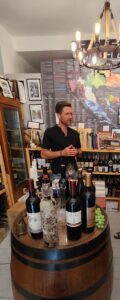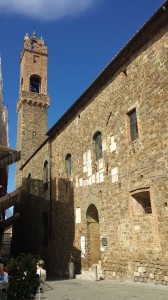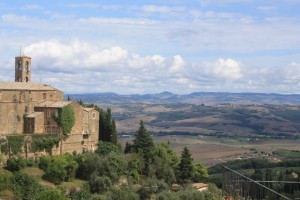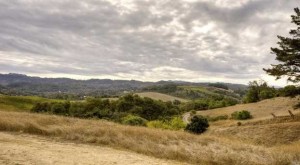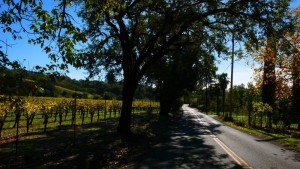We didn’t get the chance to visit any wineries in Croatia, so we can’t include a winery review in this issue of Power Tasting. Instead, we’re reprising a review of Grgich Hills from the April 2016 issue. Why Grgich Hills and why now? This is an edition of Power Tasting dedicated to Croatia and its wines. Mike Grgich is one of California’s best known and beloved winemakers and is undoubtedly the best known winemaker of Croatian descent anywhere.
As noted below, Mr. Grgich has in recent years grown grapes and made wine in his native country. While there may be some exceptions we’re not aware of, the only place you can buy his Plavac Mali or Posip in the United States is at the Grgich Hills winery in Rutherford. Interestingly, the winery is now growing Crjenak Castelanski in California. They claim that this grape is either a predecessor, distant cousin or twin sister of Zinfandel. We offer no opinion, but love the idea that someone is trying to make an unheard of wine in Napa Valley.
The Croatians are very proud of Mike Grgich and feature his local wines prominently. Look closely at the wines displayed at the Dubrovnik Enoteca and you’ll see his Plavac Mali on the barrel head.
Shortly after this issue went to press, Power Tasting learned of the death of Miljenko (Mike) Grgich at age 100. We wish to remember the life and career of a great winemaker.
There really isn’t anyplace left in Napa Valley where you can visit a winery the way it was in the beginning of the region’s rise to worldwide prominence. There are more than a few wineries you can visit that were originated by the old-timers: Joseph Phelps, Caymus, Robert Mondavi, Heitz Cellars, Beaulieu Vineyards and Chateau Montelena come quickly to mind. But these are all rather palatial and bear little resemblance to what were once essentially factory buildings surrounded by farms. If there is one place that has preserved at least a bit of the atmosphere of the 1970’s, it’s Grgich Hills Estate.
Its story is almost as important as its physical presence. Miljenko Grgich, universally known as Mike, was the winemaker at Chateau Montelena who made the winning white wine at the famous Judgement of Paris in 1976. He needed capital to open his own winery and so teamed with coffee magnate Austin Hills to found Grgich Hills. Quite elderly now, he can still be seen on occasion at the winery, keeping an eye on his heritage.
The winery itself is a simple, vine-covered industrial building. It sits right along Route 29 in Rutherford and at some times the Wine Train runs right in front of it. What the Grgich Hills lacks in architectural splendor it makes up in authenticity and a welcoming atmosphere. The building is surrounded by vineyards and gardens. The tasting room is a wood-paneled bar, much like the sort you might build yourself if you were setting up a party room in your basement. The servers are usually friendly and efficient and try to make your visit enjoyable and memorable.
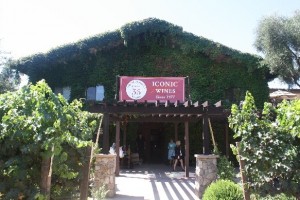 The Grgich Hills winery The Grgich Hills winery |
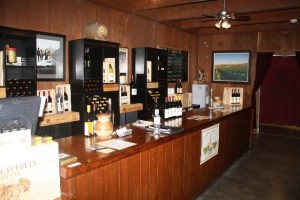 The tasting room The tasting room
|
Like many Napa Valley wineries, Grgich Hills produces wines from a wide number of varietals. It is best known for its Chardonnay which is what has come to typify Napa Chardonnays: buttery, oaky, deeply flavored, full of fruit. Depending on your tastes it is either the apogee of what California has to offer or an avatar of the excess that California has allowed itself. In trying the Grgich Hills chard, you can calibrate your mouth on the scale of California white wines.
Grgich Hills also has well-regarded Zinfandels and Cabernet Sauvignons, again highly fruit forward and intense. Over the years, we have bought their Merlot more often than any other of their wines. They also offer a few oddities, especially the Croatian wines from Mike’s own vineyards in his native land. You can taste grapes utterly unknown in America, like the white Pošip and the red Plavac Mali. They’re something like…well, nothing that we’ve ever tasted before. If you have a chance, you should taste Grgich Hills’ renowned dessert wine, Violeta, named for his daughter who now runs the estate.
Stepping up to the bar is rewarding, but if you’d like to go deeper, the winery offers a number of tours and seated tastings. The latter may be a good choice on weekends, when every winery on Route 29 is jam-packed. Grgich Hills also has one attraction that we consider to be just plain silly. For $30 ($15 for kids) you can take off your shoes and stomp grapes. You’ll get a tasting, a stomping, a t-shirt and sticky feet. It’s not our thing, but it’s quite popular.
A great thing about Grgich Hills is its combined sense of history and modernity. It’s one of the places where it all started, under the guidance of a winemaker who helped define Napa Valley. But it is still contemporary, with wines that have evolved…a bit. It’s one of the last independently owned, quality wineries in the valley, which by itself makes Grgich Hills worth a visit.
